For whatever it's worth, you code works fine on my system even without the for loop to set the label colors. Just as a reference, here's a stand-alone example trying to follow essentially exactly what you posted:
import matplotlib.pyplot as plt
import numpy as np
# Generate some data
num = 200
x = np.linspace(501, 1200, num)
yellow_data, green_data = np.random.random((2,num))
green_data -= np.linspace(0, 3, yellow_data.size)
# Plot the yellow data
plt.fill_between(x, yellow_data, 0, color='yellow')
plt.yticks([0.0, 0.5, 1.0], color='yellow')
# Plot the green data
ax2 = plt.twinx()
ax2.plot(x, green_data, 'g-')
plt.yticks([-4, -3, -2, -1, 0, 1], color='green')
plt.show()

My guess is that your problem is mostly coming from mixing up references to different objects. I'm guessing that your code is a bit more complex, and that when you call plt.yticks, ax2 is not the current axis. You can test that idea by explicitly calling sca(ax2) (set the current axis to ax2) before calling yticks and see if that changes things.
Generally speaking, it's best to stick to either entirely the matlab-ish state machine interface or the OO interface, and don't mix them too much. (Personally, I prefer just sticking to the OO interface. Use pyplot to set up figure objects and for show, and use the axes methods otherwise. To each his own, though.)
At any rate, with matplotlib >= 1.0, the tick_params function makes this a bit more convenient. (I'm also using plt.subplots here, which is only in >= 1.0, as well.)
import matplotlib.pyplot as plt
import numpy as np
# Generate some data
yellow_data, green_data = np.random.random((2,2000))
yellow_data += np.linspace(0, 3, yellow_data.size)
green_data -= np.linspace(0, 3, yellow_data.size)
# Plot the data
fig, ax1 = plt.subplots()
ax2 = ax1.twinx()
ax1.plot(yellow_data, 'y-')
ax2.plot(green_data, 'g-')
# Change the axis colors...
ax1.tick_params(axis='y', labelcolor='yellow')
ax2.tick_params(axis='y', labelcolor='green')
plt.show()

The equivalent code for older versions of matplotlib would look more like this:
import matplotlib.pyplot as plt
import numpy as np
# Generate some data
yellow_data, green_data = np.random.random((2,2000))
yellow_data += np.linspace(0, 3, yellow_data.size)
green_data -= np.linspace(0, 3, yellow_data.size)
# Plot the data
fig = plt.figure()
ax1 = fig.add_subplot(1,1,1)
ax2 = ax1.twinx()
ax1.plot(yellow_data, 'y-')
ax2.plot(green_data, 'g-')
# Change the axis colors...
for ax, color in zip([ax1, ax2], ['yellow', 'green']):
for label in ax.yaxis.get_ticklabels():
label.set_color(color)
plt.show()


